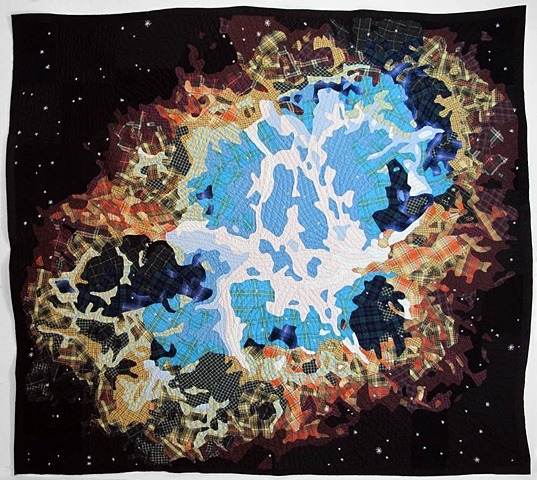Note
What is the approximate maximum distance sun flares can shoot out away from the sun?
difficult question, there are a couple different things that could fall under the umbrella of 'sun flare'. the event people think of most often when the subject is brought up is a Coronal Mass Ejection, and the answer is that the charged particles released will go until they hit something else, spreading out and loosing energy along the way
18 notes
·
View notes
Photo
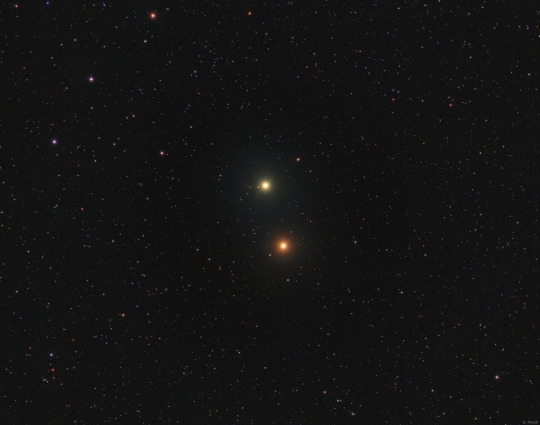
Mars Saturn Conjunction : Fainter stars in the zodiacal constellation Capricornus are scattered near the plane of the ecliptic in this field of view. The two brightest ones at center aren’t stars at all though, but the planets Mars and Saturn. Taken on the morning of April 4, the telescopic snapshot captured their tantalizing close conjunction in a predawn sky, the pair of planets separated by only about 1/3 of a degree. That’s easily less than the apparent width of a Full Moon. Can you tell which planet is which? If you guessed Mars is the redder one , you’d be right. Above Mars, slightly fainter Saturn still shines with a paler yellowish tinge in reflected sunlight. Even at the low magnification, Saturn’s largest and brightest moon Titan can be spotted hugging the planet very closely on the left. via NASA
542 notes
·
View notes
Note
How long does it take the sunrays to reach earth.
about 8 minutes
10 notes
·
View notes
Text
With October just around the corner, NASA has released its latest Galaxy of Horrors posters. Presented in the style of vintage horror movie advertisements. As fun and creative as all three posters are, they're based on real phenomena. 🎃
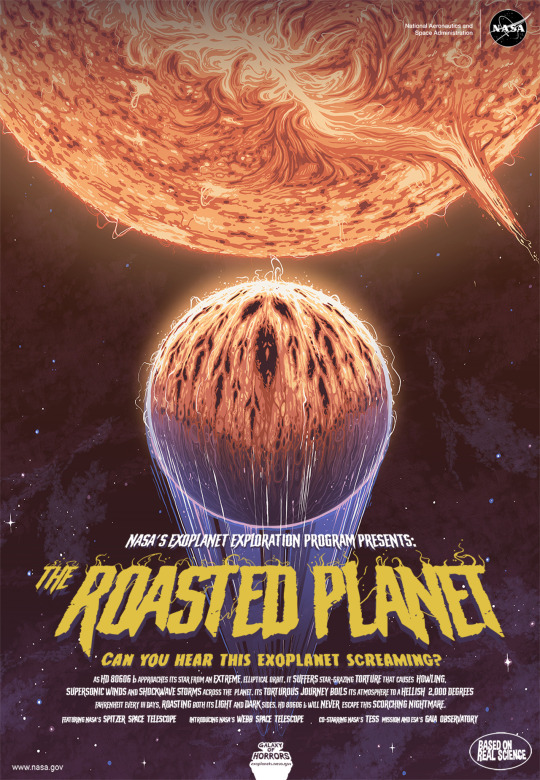
Can you hear this exoplanet screaming?
As HD 80606 b approaches its star from an extreme, elliptical orbit, it suffers star-grazing torture that causes howling, supersonic winds and shockwave storms across the planet. Its torturous journey boils its atmosphere to a hellish 2,000 degrees Fahrenheit every 111 days, roasting both its light and dark sides. HD 80606b will never escape this scorching nightmare.
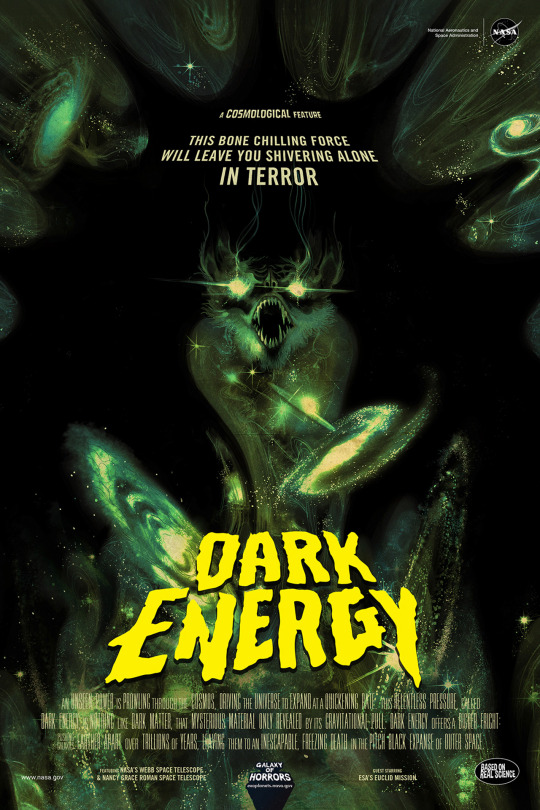
This bone-chilling force will leave you shivering alone in terror!
An unseen power is prowling throughout the cosmos, driving the universe to expand at a quickening rate. This relentless pressure, called dark energy, is nothing like dark matter, that mysterious material only revealed by its gravitational pull. Dark energy offers a bigger fright: pushing galaxies farther apart over trillions of years, leaving the universe to an inescapable, freezing death in the pitch black expanse of outer space.
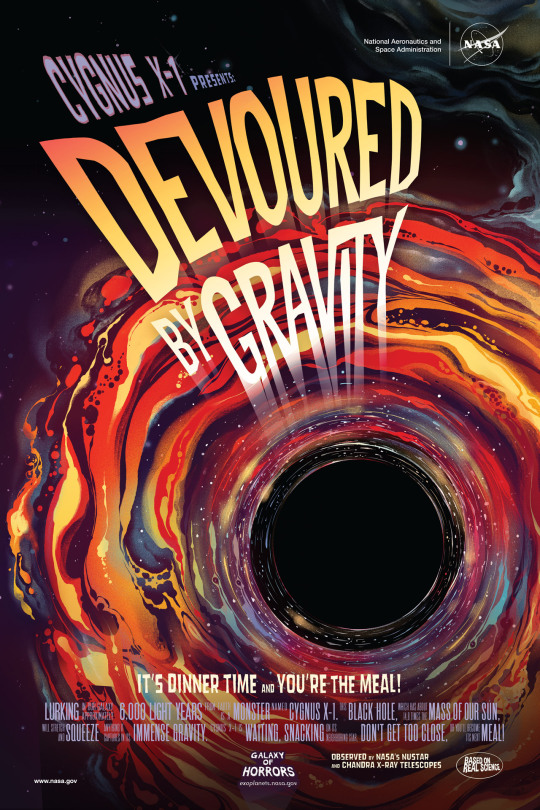
Cygnus X-1 Presents:
It’s Dinner Time and You’re The Meal!
Lurking in our galaxy, approximately 6,000 light-years from Earth, is a monster named CygnusX-1. This black hole, which has about 14.8 times the mass of our Sun, will stretch and squeeze anything it captures in its immense gravity. Cygnus X-1 is waiting, snacking on its neighboring star. Don’t get too close, or you’ll become its next meal!
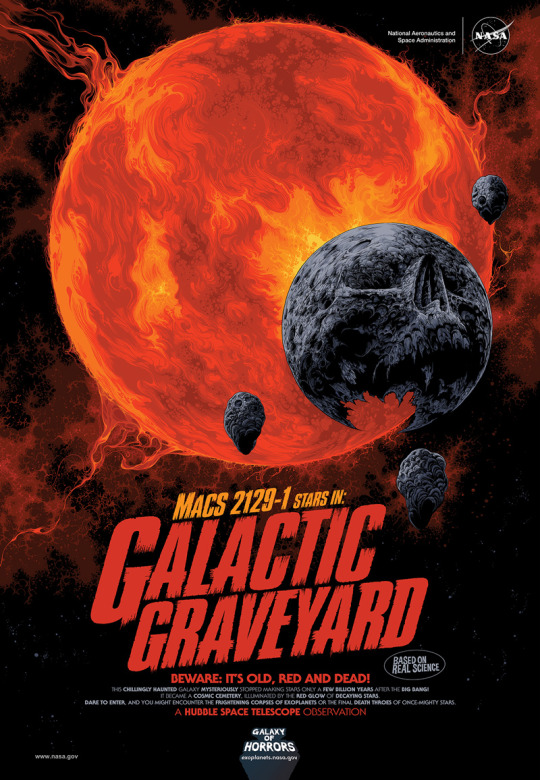
This chillingly haunted galaxy mysteriously stopped making stars only a few billion years after the Big Bang! It became a cosmic cemetery, illuminated by the red glow of decaying stars. Dare to enter, and you might encounter the frightening corpses of exoplanets or the final death throes of once-mighty stars.

Something strange and mysterious creeps throughout the cosmos. Scientists call it dark matter. It is scattered in an intricate web that forms the skeleton of our universe. Dark matter is invisible, only revealing its presence by pushing and pulling on objects we can see. NASA’s Roman Space Telescope will investigate its secrets. What will be revealed?
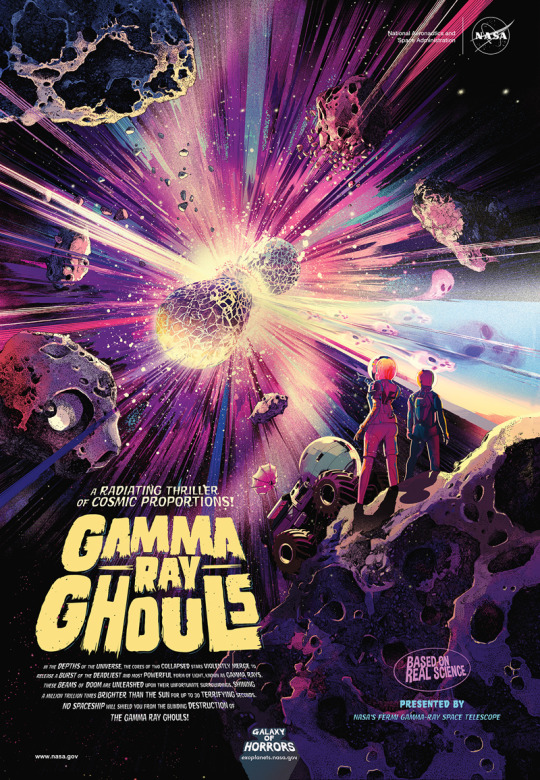
In the depths of the universe, the cores of two collapsed stars violently merge to release a burst of the deadliest and most powerful form of light, known as gamma rays. These beams of doom are unleashed upon their unfortunate surroundings, shining a million trillion times brighter than the Sun for up to 30 terrifying seconds. No spaceship will shield you from the blinding destruction of the gamma ray ghouls!
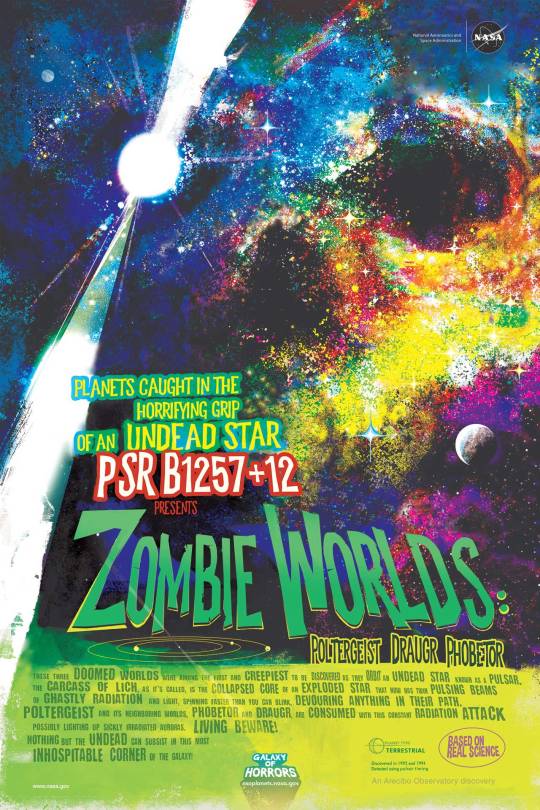
These doomed worlds were among the first and creepiest to be discovered as they orbit an undead star known as a pulsar. Pulsar planets like Poltergeist and its neighboring worlds, Phobetor and Draugr, are consumed with constant radiation from the star’s core. Nothing but the undead can subsist in this most inhospitable corner of the galaxy.
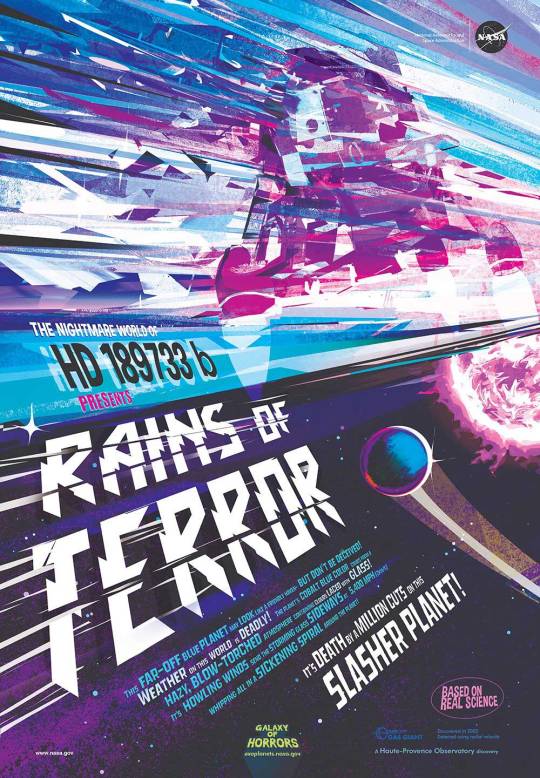
This far-off blue planet may look like a friendly haven – but don’t be deceived! Weather here is deadly. The planet’s cobalt blue color comes from a hazy, blow-torched atmosphere containing clouds laced with glass. Howling winds send the storming glass sideways at 5,400 mph (2km/s), whipping all in a sickening spiral. It’s death by a million cuts on this slasher planet!
58K notes
·
View notes
Text
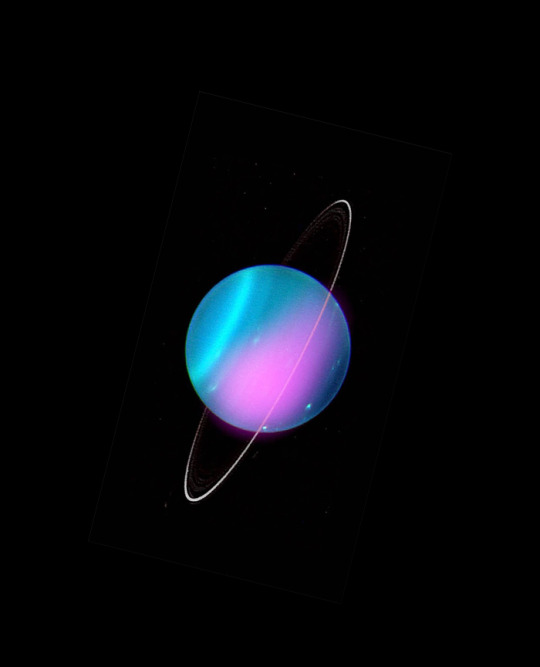
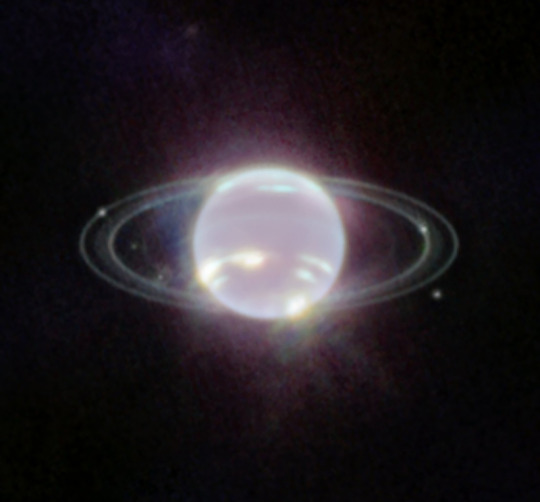
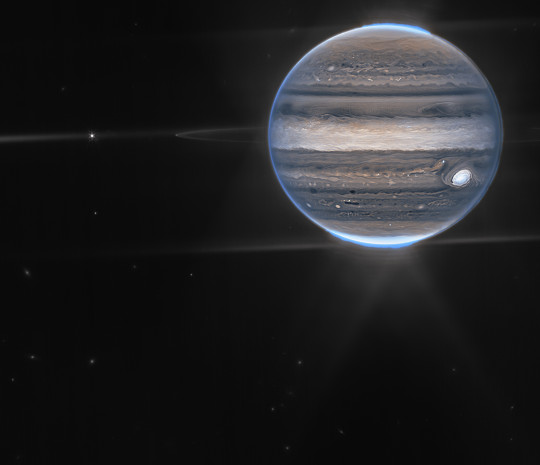
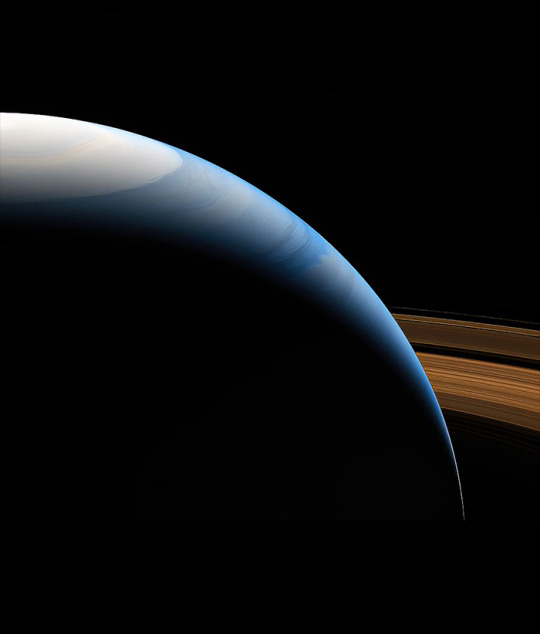
Rings of Gas Giants
l Uranus (Chandra) l Neptune, Jupiter (Webb) l Saturn (Cassini)
36K notes
·
View notes
Photo



Saturn
8/14/2022
Taken with: Celestron AVX mount and EdgeHD 800 optical tube, ZWO 174mini (moons), Celestron Neximage 10 (planet)
Controlled With: Starsense Hand Control, ASIAIR Plus
Process: PiPP for avi conversion, AS!3 for stacking and quality, Photoshop for labeling and histogram adjustment
70 notes
·
View notes
Video
tumblr
30 Minute Timelapse of Cassiopeia
8/11/2022
Nikon Z5, Nikkor Z 50 f/1.8
ISO 3200
1 sec exposure
5 sec interval
68 notes
·
View notes
Video
tumblr
30 minute timelapse on Cassiopeia
Nikon Z5, Nikkor Z 50 f/1.8
ISO 3200
1 second exposures
5 second interval
28 notes
·
View notes
Photo



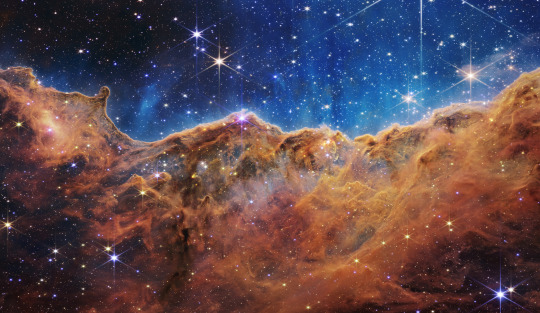
First images from the James Webb Space Telescope:
Galaxy cluster SMACS 0723
Southern Ring planetary nebula
Stephan’s Quintet
Carina Nebula
16K notes
·
View notes
Photo

Black-Eye Galaxy (M64)
6/20/2022
Taken with: Celestron AVX mount and EdgeHD 800 optical tube, Celestron OAG, ZWO 174mini guide camera, ZWO ASI294 MC Pro camera
120s x 20 Exposures x 300 Gain
Controlled With: Starsense Hand Control, ASIAIR Plus
Process: ASI DeepStack, Lightroom for color noise reduction and brilliance increase, color correction, dehazing
36 notes
·
View notes
Photo

Strawberry Moon
6/13/2022
Taken with: Celestron AVX mount and EdgeHD 800 optical tube, Nikon Z5 camera
1/60s x 40 Exposures x 250 ISO
Controlled With: Hand Controller
Processed with: PiPP for AVI conversion, Autostakkert for stacking , Lightroom for brightness and contrast adjustment, texturing, noise reduction, and sharpening.
78 notes
·
View notes
Photo
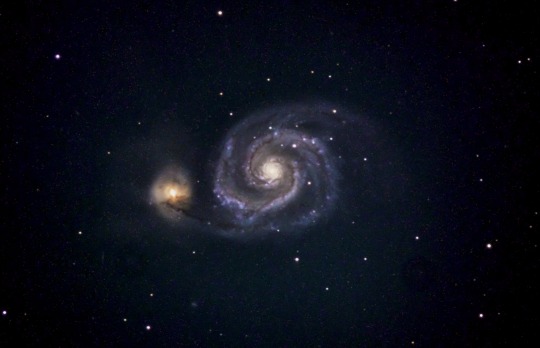
Whirlpool Galaxy (M51) 6/18/2022 Taken with: Celestron AVX mount and EdgeHD 800 optical tube, Celestron OAG, ZWO 174mini guide camera, ZWO ASI294 MC Pro camera 60s x 60 Exposures Controlled With: Starsense Hand Control, ASIAIR Plus Process: ASI DeepStack, Lightroom for color noise reduction and contrast increase, color correction and dehazing
104 notes
·
View notes
Text

Sombrero Galaxy (M104)
6/10/2022
Taken with: Celestron AVX mount and EdgeHD 800 optical tube, Celestron OAG, ZWO 174mini guide camera, ZWO ASI294 MC Pro camera
20s x 60 Exposures
Controlled With: Hand Control, ASIAIR Plus
Processed with: ASIDeepStack, Photoshop for noise reduction, Lightroom for black point adjustment
80 notes
·
View notes
Text
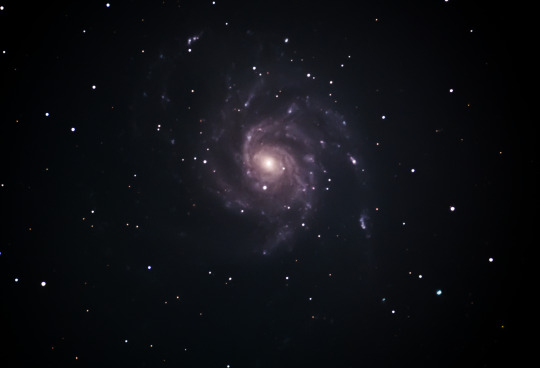
Pinwheel Galaxy (M101)
6/9/2022
Taken with: Celestron AVX mount and EdgeHD 800 optical tube, Celestron OAG, ZWO 174mini guide camera, ZWO ASI294 MC Pro camera
180s x 15 Exposures
Controlled With: Hand Control, ASIAIR Plus
Process: ASI DeepStack, Photoshop for noise reduction and contrast increase, Lightroom for color correction and dehazing
69 notes
·
View notes
Photo
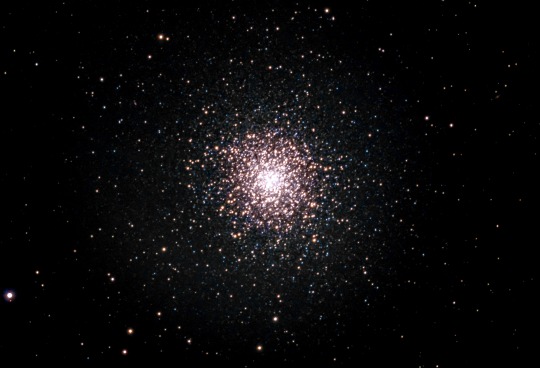
The Great Globular Cluster in Hercules (M13)
6/7/2022
Taken with: Celestron AVX mount and EdgeHD 800 optical tube, Celestron OAG, ZWO 174mini guide camera, ZWO ASI294 MC Pro camera
10s x 60 Exposures
Controlled With: Hand Control, ASIAIR Plus
Process: ASI DeepStack, Photoshop for noise reduction and contrast increase
155 notes
·
View notes
Photo
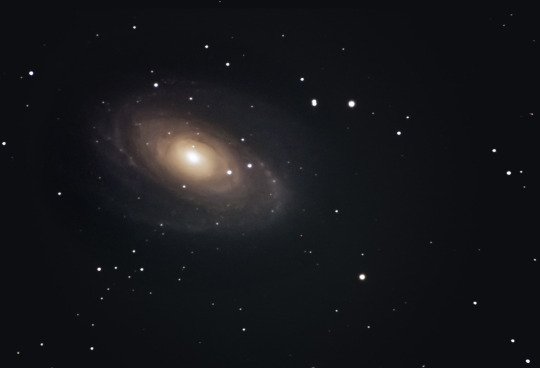
My first time imaging a galaxy!
Bode’s Galaxy (M81)
6/1/2022
Taken with: Celestron AVX mount and EdgeHD 800 optical tube, Celestron OAG, ZWO 174mini guide camera, ZWO ASI294 MC Pro camera
10s x 30 Exposures
Controlled With: Hand Control, ASIAIR Plus
Process: ASI DeepStack, Photoshop for noise reduction, temperature adjustment, black point increase, vibrancy adjustment
87 notes
·
View notes



